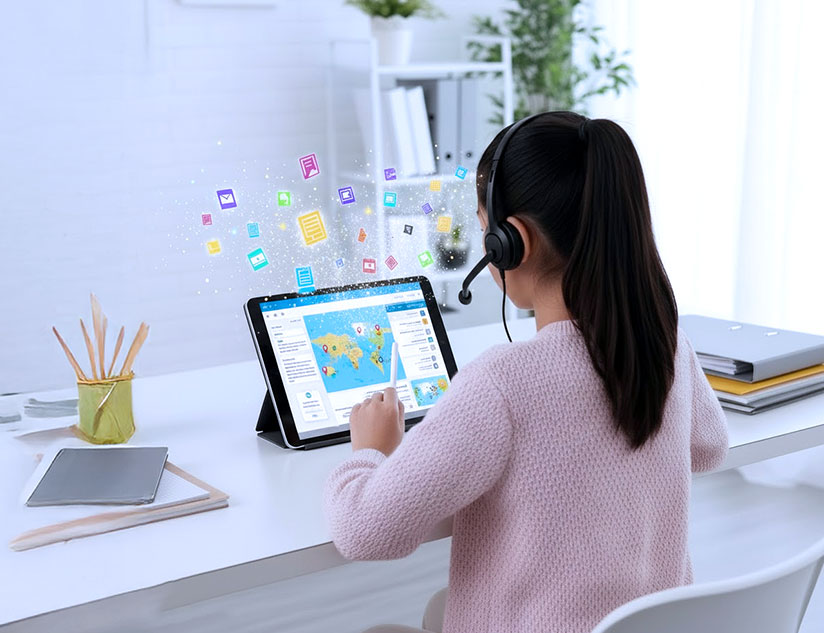With a shift to digital and adoption of mobile devices, chromebooks in schools, educational resources have begun to shift to online and digital platforms. Most of the times a single medium/destination is not sufficient. Learners require multiple applications/websites that can provide them with the required sources of information for better learning. However, every application requires a secure way for student to access it and some cases it becomes necessary that multiple application should share data or in more human terms ‘interact’ with each other. To enable this interaction, IMS Global has published several learning technology interoperability standards available under a royalty-free license for Edtech companies and developers.
What is LTI?
LTI refers to Learning Tool Interoperability; it is the mechanism by which users of one learning platform or tool can access the content of other third party applications. In the era of EdTech, LTI has been very useful and has considerably widened the scope of learning.
Why is it useful?
A single application or LMS is not capable of encapsulating all the knowledge or content but with the use of LTI, multiple applications can share the knowledge across. In today’s interconnected world integrating any learning application with other platforms or tools is essential. IMS global has laid down some standards for LTI Compliance.
What are its benefits?
1. LTI enables a single sign-on online environment for all users.
2. LTI Consumer users need to sign-in on only one system to access the content of the tool Provider.
3. LTI helps in integrating a system with multiple other systems and tools. Various LMS can use the content of the tool provider by integrating in the same way.
LTI Basic Flow:
● LTI basically connects two systems together that is Tool Consumer and Tool Provider.
● Tool Consumer(TC) can be an LMS like moodle, blackboard, canvas.
● Tool Provider(TP) provides the content; it can be an external resource.
● TC and TP can connect with each other through messages using a secure connection using OAuth.
● Tool Provider is responsible for authentication and authorization of users to the tool consumer.
● Tool Provider provides three parameters to tool consumer to connect with the system:
○ Key
○ Secret
○ Launch Url
● After a successful authentication, TC is given the access to the content.
● LTI Request can be done using default parameter provided by IMS Global as well as custom parameters.
LTI Launch Request:
The essence of LTI is the launch request. Launch request is the mechanism by which tool consumer redirects its user to a tool provider. When a user from tool consumer like LMS accesses the tool provider it is called Launching an LTI Application.
The user needs to hit the Http post request by passing the required parameters. The connection is secured via OAuth signature. The important values for signing a message using OAuth are the Consumer key and Secret. The Consumer key is passed in the message as plain text and identifies which Tool Consumer is sending the message. The shared secret is used to sign the message but should not be sent by the Tool consumer. The tool consumer needs to send the mandatory LTI parameters for that.
Required parameters to be sent via launch request are:
1. Launch Url:The tool provider URL which needs to be accessed.
2. Consumer Key:It is generated by the tool provider who should ensure that all the keys issued are unique and are used only for a single tool consumer system.
3. Resource Id: It is the value that is sent by a tool consumer which tells what resource is to be accessed. Apart from these, there is LTI version and LTI message type which are also the mandatory fields.
The Learning Tools Interoperability (LTI) specification was developed and first released by the IMS Global Learning Consortium as Basic LTI in May 2010 (and is now referred to as LTI 1.0).
LTI Versions Released till date are:
1 – May 2010
1.1 – March 2012
1.1.1 – June 2012
1.2 – Public draft
2.0 – January 2014
IMS Global has programs that enable products to be certified as compliant with specific standards and features of the application. Our content distribution platform, MagicBoxTM, is IMS certified for being LTI compliant https://www.imsglobal.org/compliance/getmagicbox-v142
LTI has given the educational world a lot of benefits and has helped us to increase the reach of various learning resources. So, let’s integrate and increase our learning horizons.
For more details regarding how to implement LTI, you can refer to the following link:
https://www.imsglobal.org/specs/ltiv1p0/implementation-guide
About the writer: Farheen Rizvi is a passionate programmer, inquisitive developer and an avid learner of technology. She currently works as Software Developer at Magic Software.














